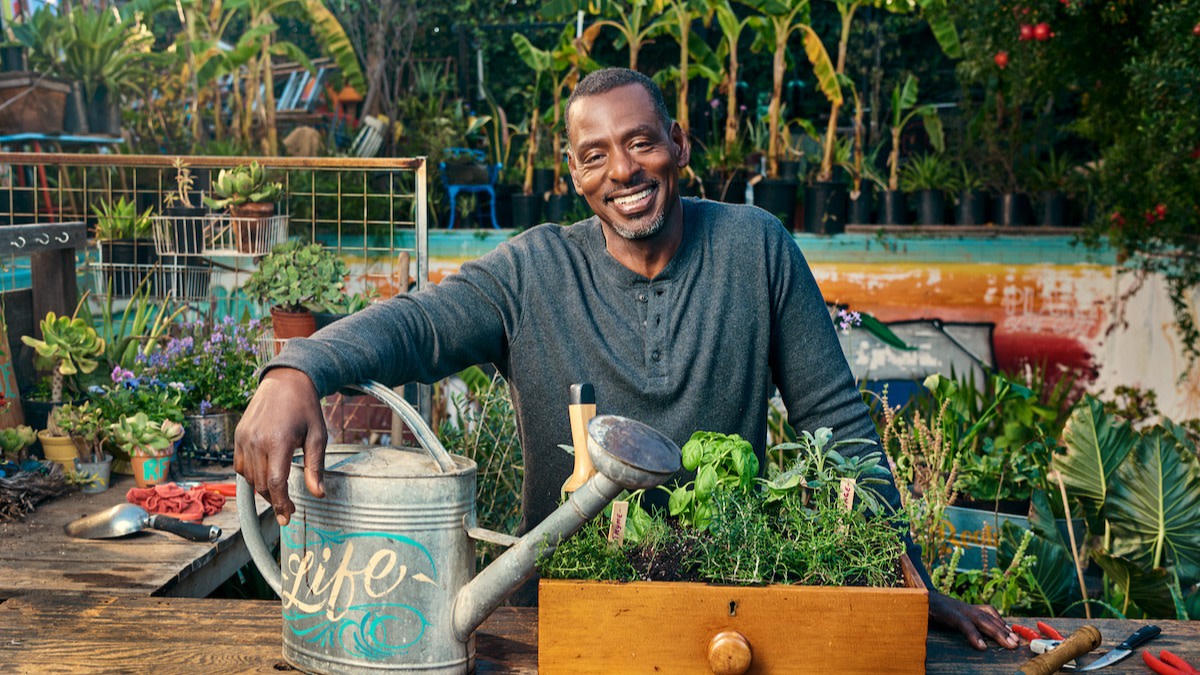Ron Finley: How to Grow Potatoes in a Sack (Like a Gangsta)
Written by MasterClass
Last updated: Jun 7, 2021 • 3 min read
Planting potatoes is the perfect DIY project for amateur gardeners working within the confines of a small space. There are many ways to grow potatoes, but if you don’t want to spend a whole lot of time or money, community gardener Ron Finley has developed an easy way to plant potatoes that requires little more than a burlap sack and some soil.
Learn From the Best
How to Grow Potatoes in a Sack (Like a Gangsta)
Among gardeners, growing potatoes has built up a reputation as backbreaking work. First, you must thoroughly loosen the soil to a depth of 12 inches (deeper than what most crops require) and mix in large quantities of compost. Then, when you’re ready to harvest, you have to dig again, and it’s almost impossible to fish all the tubers out of the soil without cutting many of them with your spade. Urban gardening expert Ron Finley, has a better method that works for both white potatoes and sweet potatoes.
- Collect burlap bags. Obtain as many used large burlap bags from a local coffee roaster as you can (they’re usually available for free). While many potato growers use grow bags or trash bags, Ron uses burlap bags because they are more durable, and, unlike plastic bags, they’re porous and don’t require added drainage holes. The number of bags you need depends on the number of potatoes you plan on planting. Each bag is capable of holding six to eight sprouting potatoes.
- Fill the bags with potting soil. Double up the bags and roll down the edges about eight to 12 inches. Then, fill your growing bags almost to the brim with soil mix.
- Prepare the potatoes for planting. Cut grocery store-bought potatoes into two-inch chunks, making sure there is at least one “eye” on each chunk (for best results, use organically grown potatoes, as conventional potatoes are often treated with growth inhibitors). You can also use specialty disease-free seed potatoes, which you can find in garden centers, but Ron has found that most organic potatoes work just as well.
- Plant the potatoes. Plant the seed pieces about six inches deep in the soil, six to eight chunks per bag. Make sure to space the pieces evenly within the bag.
- Let the potatoes grow. Find a spot in your vegetable garden or raised bed that gets plenty of direct sunlight, and place the bags directly on the ground. Potatoes require six to eight hours of full sun per day. Growing season varies by location, but spuds do best in temperatures above freezing and below 80°F. Hard freezes stop potato tubers from sprouting, so don’t plant potatoes during the winter. If there’s any danger of frost, you can pile extra soil, mulch, or organic matter around the sprouting plants; this technique is called “hilling,” and it provides protection for the fragile sprouts. Water your potatoes whenever the top few inches of the soil dries out.
- Look out for pests. Keep an eye out for Colorado potato beetles—voracious potato pests that lay eggs on the bottoms of leaves. If you catch them early in an infestation, you can pick them off by hand. (Traditionally planted potatoes benefit from companion planting alongside horseradish, parsley, and flax to deter these dreaded beetles; try keeping a few parsley plants near your sacks to serve the same purpose.)
- Harvest the mature potatoes. The above-ground portion of the potato plants will grow for several months, eventually producing purple or white flowers. After the flowers have faded and the foliage begins to die, it’s harvest time. This part of the process couldn’t be easier, says Ron. “Cut the bottom open and the potatoes just fall out.”
- Store the potatoes. Once you’ve cleaned the dirt off your new potatoes, it’s time to store them. Small potatoes won’t keep longer than a few weeks, but large potatoes can be stored for a few months in cool, dark environments.
- Experiment with different potato varieties. Once you’ve successfully grown your own potato crop, it’s time to start planning for next year’s harvest. Experiment with other types of homegrown potatoes including Yukon Gold, fingerling, and russet potatoes.
Learn More
Grow your own food with Ron Finley, the self-described "Gangster Gardener." Get the MasterClass Annual Membership and learn how to cultivate fresh herbs and vegetables, keep your house plants alive, and use compost to make your community - and the world - a better place.
